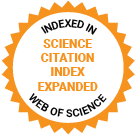Journal of Medical Internet Research
The leading peer-reviewed journal for digital medicine and health and health care in the internet age.
Editor-in-Chief:
Gunther Eysenbach, MD, MPH, FACMI, Founding Editor and Publisher; Adjunct Professor, School of Health Information Science, University of Victoria, Canada
Impact Factor 5.8 CiteScore 14.4
Recent Articles

Patient-generated health data (PGHD) encompass health-related information created, recorded, and gathered by patients in their daily lives, and is distinct from data collected in clinical settings. PGHD can offer insight into patients’ everyday health behaviors and conditions, supporting health management and clinical decision-making. The Veterans Health Administration (VHA) has developed a robust infrastructure to collect PGHD, including automatically collected data from digital sensors and patient-entered data. This effort is guided by comprehensive policy and strategy documents to ensure the secure storage and effective use of PGHD. This paper describes the development and implementation of an infrastructure to support PGHD within VHA and highlights envisioned clinical and research uses of PGHD to advance healthcare for U.S. Veterans. The PGHD database was built to Fast Healthcare Interoperability Resources standards, facilitating secure data storage and exchange of PGHD. Clinical tools, such as the provider-facing dashboards, make PGHD accessible from the electronic health record. Research and evaluation efforts focus on evaluating PGHD’s impact on patient engagement, clinical outcomes, and healthcare equity. VHA’s comprehensive PGHD infrastructure represents a significant advancement in personalized healthcare and patient engagement. Integration of PGHD into clinical practice can enhance shared decision-making and self-management, while research and evaluation efforts can address how to maximize the benefits of PGHD for Veterans. VHA’s approach sets a benchmark for other U.S. healthcare systems in leveraging PGHD to achieve the broad aims of enhancing stakeholder healthcare experiences, improving population health and health equity, and reducing costs.

The proliferation of health-related content on social media platforms has changed the way people access and interpret information about cosmetic medicine. TikTok has become an important platform for sharing breast enhancement content, yet little is known about the quality, credibility, and impact of such information on user perceptions and decision-making.

Poor adherence to oral medications for type 2 diabetes can increase the risk of health complications. Digital interventions can affect people’s experiences of self-managing a chronic condition, and SMS text messages may provide an effective delivery method for an intervention. The Support Through Mobile Messaging and Digital Health Technology for Diabetes (SuMMiT-D) intervention uses evidence-based SMS text messages to support people with type 2 diabetes with regular and consistent use of diabetes medication.

Health portraits powered by big data integrate diverse health-related data into actionable insights, thereby facilitating precise risk prediction and personalized management of noncommunicable diseases (NCDs). Despite their promise, the adoption and application of health portraits remain fragmented, primarily due to the lack of a standardized conceptual and methodological framework necessary to fully harness their capabilities.

Wasp stings are a significant public health concern in many parts of the world, particularly in tropical and subtropical regions. The venom of wasps contains a variety of bioactive compounds that can lead to a wide range of clinical effects, from mild localized pain and swelling to severe, life-threatening allergic reactions, such as anaphylaxis. With the rapid development of artificial intelligence (AI) technologies, large language models (LLMs) are increasingly being used in health care, including emergency medicine and toxicology. These models have the potential to assist health care professionals in making fast and informed clinical decisions. This study aimed to assess the performance of 4 leading LLMs—ERNIE Bot 3.5 (Baidu), ERNIE Bot 4.0 (Baidu), Claude Pro (Anthropic), and ChatGPT 4.0—in managing wasp sting cases, with a focus on their accuracy, comprehensiveness, and decision-making abilities.

Emotional well-being interventions lead to better mental and physical health. However, most of these interventions have been tested on relatively homogeneous samples, with few interventions large enough to examine whether key sociodemographic factors impact outcomes. In addition, barriers to engagement include access and high participant burden. We developed a brief web-based intervention to address these barriers and tested the effects across sociodemographic groups.

A significant gap exists in the knowledge and procedural skills of medical graduates when it comes to managing emergencies. In response, highly immersive virtual-reality (VR)-based learning environments have been developed to train clinical competencies. However, robust evidence on how VR-based methods affect both short- and long-term learning outcomes, as well as physiological and perceived stress, remains limited.

Online accessible patient education materials (PEMs) are essential for patient empowerment. However, studies have shown that these materials often exceed the recommended sixth-grade reading level, making them difficult for many patients to understand. Large language models (LLMs) have the potential to simplify PEMs into more readable educational content.

Parkinson disease (PD) presents motor and nonmotor challenges that significantly affect quality of life. Telemedicine has emerged as a promising approach to deliver interventions, including exercise performed through remote equipment (e-Exercise), cognitive behavioral training sessions conducted remotely (e-Cognitive), and consultations conducted through remote devices (e-Visits), yet their comparative effectiveness remains unclear.

WeChat mini program-based interventions grounded in behavioral theories show promise in promoting and maintaining healthy lifestyles among patients with cardiovascular diseases (CVDs) after hospital discharge. However, limited randomized controlled trials (RCTs) have evaluated the effectiveness of such interventions among Chinese patients with CVDs in a home-based rehabilitation context.
Preprints Open for Peer-Review
Open Peer Review Period:
-
Open Peer Review Period:
-
Open Peer Review Period:
-


















